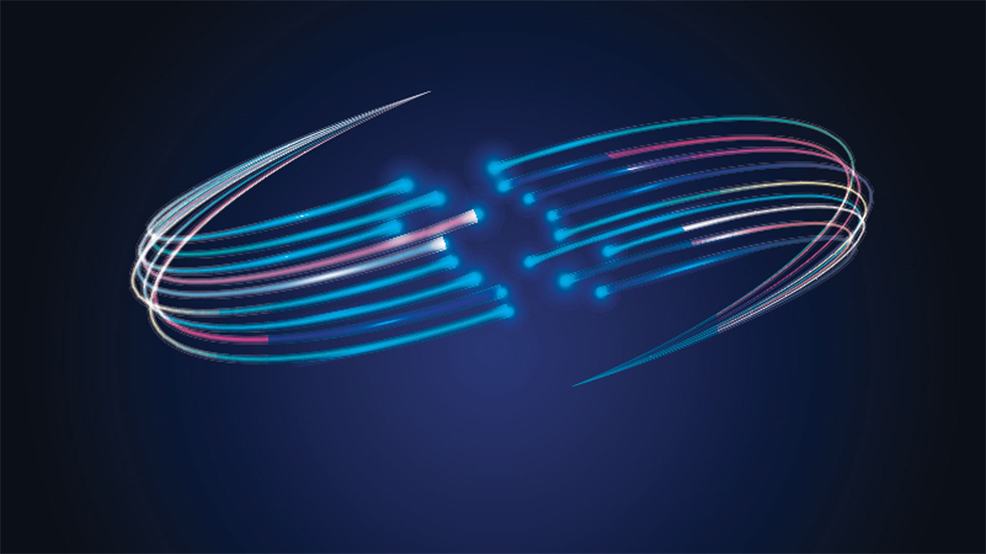
24th October 2022 New record data transmission speed The first data transmission to exceed 1 petabit per second (Pbit/s) using only a single laser and a single optical chip has been demonstrated by European researchers.
The breakthrough involved a collaboration between the Technical University of Denmark (DTU) and Chalmers University of Technology in Gothenburg, Sweden, achieving a data rate of 1.8 Pbit/s. To put this in perspective: one petabit corresponds to a million gigabits. The speed demonstrated by the researchers is equivalent to twice the traffic of the entire global Internet. Until now, state-of-the-art commercial equipment would have required at least 1,000 lasers for transmission on this scale. However, the DTU and Chalmers team created a light source from a custom-designed optical chip, able to use the light from a single infrared laser. This gets split into a rainbow spectrum of many different colours, i.e. frequencies. In this way, one frequency from a single laser can be multiplied by orders of magnitude, within a single chip. The setup is known as a frequency comb, since the colours are fixed at a specific frequency distance from each other, like the teeth on a comb. Each colour (frequency) can be isolated and used to carry data. The frequencies can then be reassembled and sent over an optical fibre.
"What is special about this chip is that it produces a frequency comb with ideal characteristics for fibre-optical communications," said Victor Torres-Company, Professor of Microtechnology and Nanoscience in the Photonics Laboratory at Chalmers. "It has high optical power and covers a broad bandwidth within the spectral region that is interesting for advanced optical communications." "Our solution provides a potential for replacing hundreds of thousands of the lasers located at Internet hubs and data centres, all of which guzzle power and generate heat," said Professor Leif Oxenløwe, Group Leader of the High-Speed Optical Communications Group at DTU. "We have an opportunity to contribute to achieving an Internet that leaves a smaller climate footprint." Furthermore, having already broken the petabit barrier for a single laser source and a single chip, the researchers believe their device has enormous future potential for scaling up. In addition to their practical demonstration, they ran a computer model to find a fundamental theoretical limit for this technology. "Our calculations show that – with the single chip, and a single laser – we will be able to transmit up to 100 Pbit/s," explained Oxenløwe. "The reason for this is that our solution is scalable, both in terms of creating many frequencies and in terms of splitting the frequency comb into many spatial copies and then optically amplifying them, and using them as parallel sources with which we can transmit data. Although the comb copies must be amplified, we do not lose the qualities of the comb, which we utilise for spectrally efficient data transmission." His team's breakthrough appears this month in the journal Nature Photonics.
Comments »
If you enjoyed this article, please consider sharing it:
|








